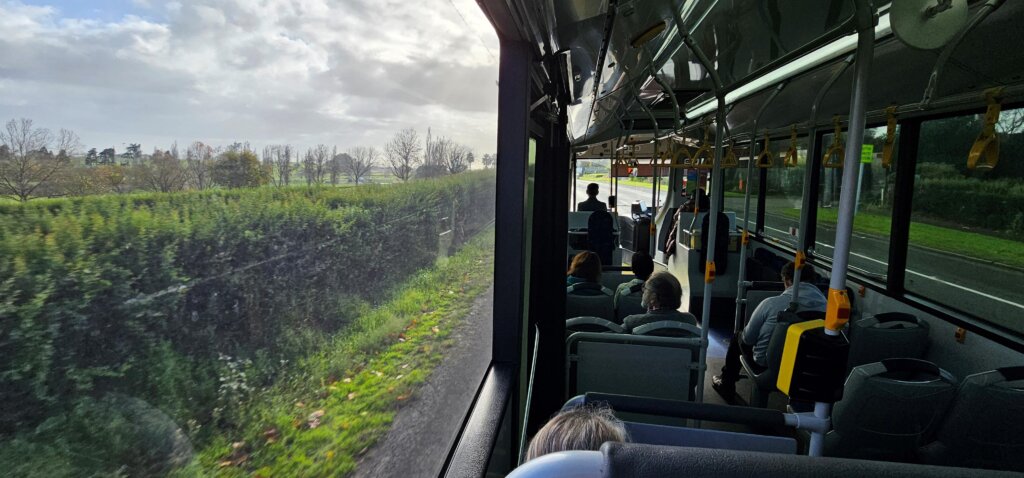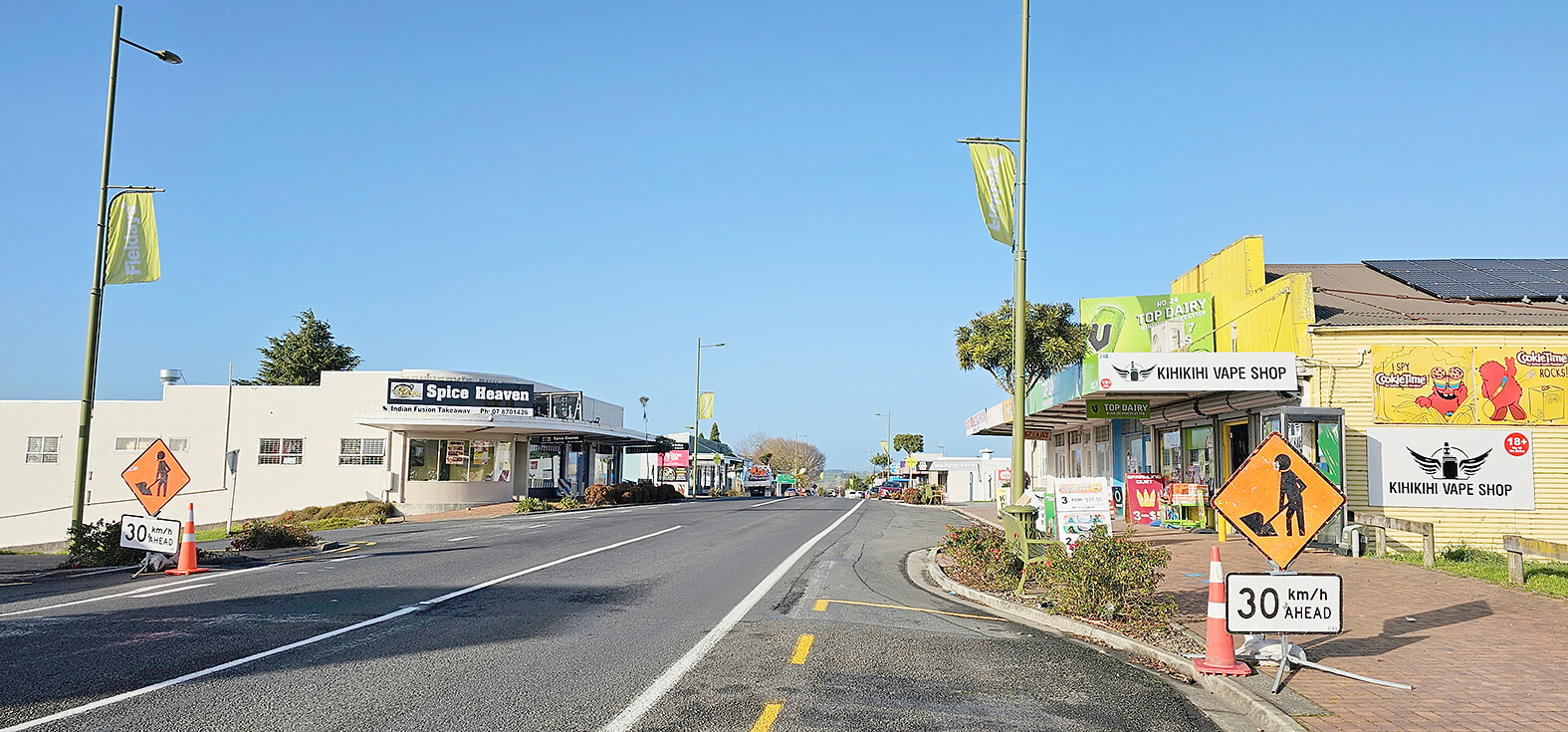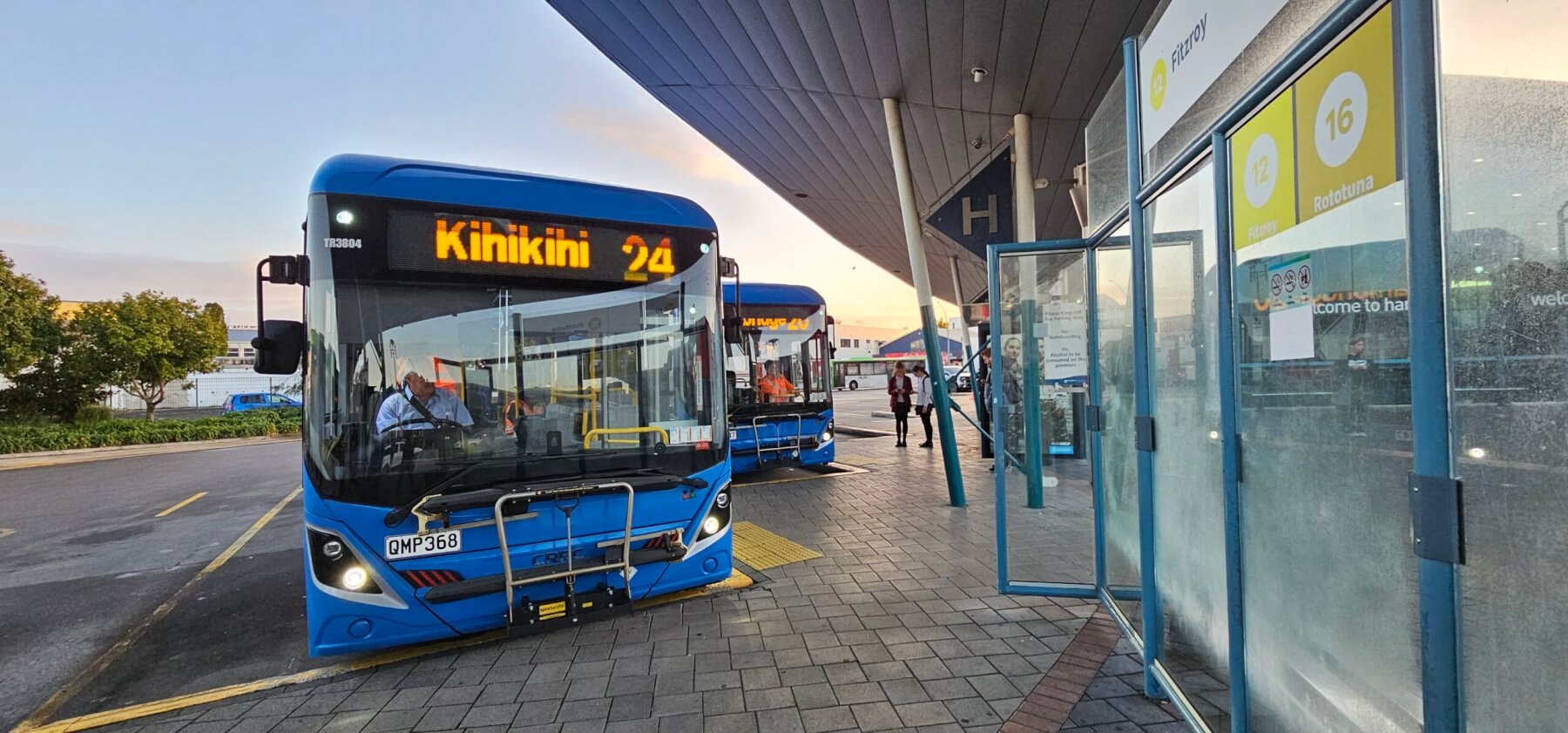Passengers catching the regional bus services from Te Awamutu and Kihikihi hit record levels last month – but price hikes are coming.
Frequency has been given as the major reason for the boost in numbers – more buses to and from Hamilton – plus the introduction of modern electric models.

The Te Awamutu 24 bus heading through the Waipa countryside to Hamilton. Photo: Mary Anne Gill.
The number 24 Te Awamutu service at about 13,000 passengers last month is soaring ahead of pre Covid numbers – and up nearly 40 per cent on May last year. The service is so pressed for space, many passengers are hopping on the Te Kūiti Connector.
The other Waipā service – number 20 from Cambridge – is also breaking records with more than 12,000 passengers last month while the Tamahere-Matangi trial, launched in February, has started with a hiss and a roar.
But there are concerns at Waikato Regional Council headquarters in Hamilton about the Te Kūiti and South Waikato connector services which travel through Waipā.

Sandra Sesto-Dekic
The Te Kūiti bus leaves the town’s i-Site at 6.40am and travels through the King Country and Waipā, arriving in Hamilton at 8.10am and Wintec Rotokauri at 8.25am.
It returns from Rotokauri at 5.15pm, arriving in Te Kūiti at 6.47pm.
Te Awamutu and Kihikihi numbers on the King Country bus are regularly more than half the total on Te Kūiti Connector each day.
Regional council team leader of Customer Focus Sandra Sesto-Dekic said it will take longer for people to get used to the increased services which now include more evening and weekend runs.
The Te Kūiti Connector year-long trial has ended, and it was a case of “use it or lose it,” she said.

On the (Regional) buses – Kihikihi
Waka Kotahi New Zealand Transport Agency funded 51 per cent while other funding came from Wintec, Waitomo, Ōtorohanga, Waipā and Waikato regional councils.
“It is a shame, it is a trial and for the trial to be successful, someone will be looking at those numbers while they are making their decision as to whether it should continue or not.”
All regional bus fares go up on July 1.
“We are now looking at the biggest ever tariff changes since we had the Bee card,” she said.
Part of it is the government’s decision to scrap subsidies for age-based fares. Before April 30, children aged five to 12 travelled free and 13-24 got half price fares.
The regional council opted to keep those until July 1.
Super Gold card holders and those with an impairment, which means they are unable to drive, remain free.
Sesto-Dekic is confident the council’s decision to introduce a weekly fare cap for under 19s of 6.5 trips and nine for adults will help.
Another success has been the extra boost given to Bee Card retailers like the Te Awamutu i-Site which also provides top ups.

On the (Regional) buses, the Te Awamutu 24

On the (Regional) buses








